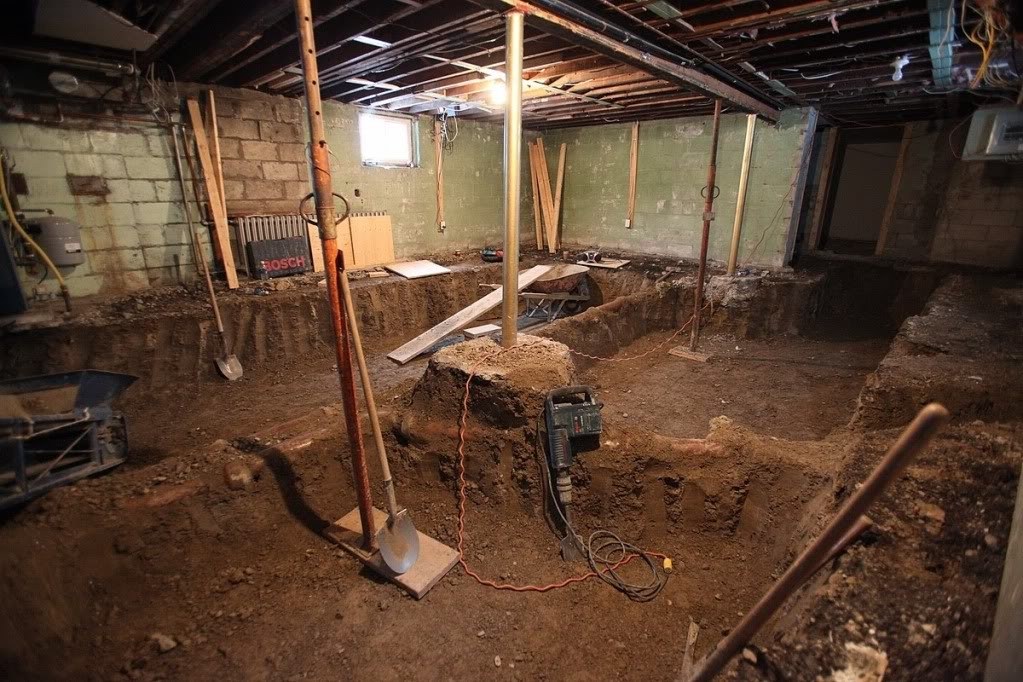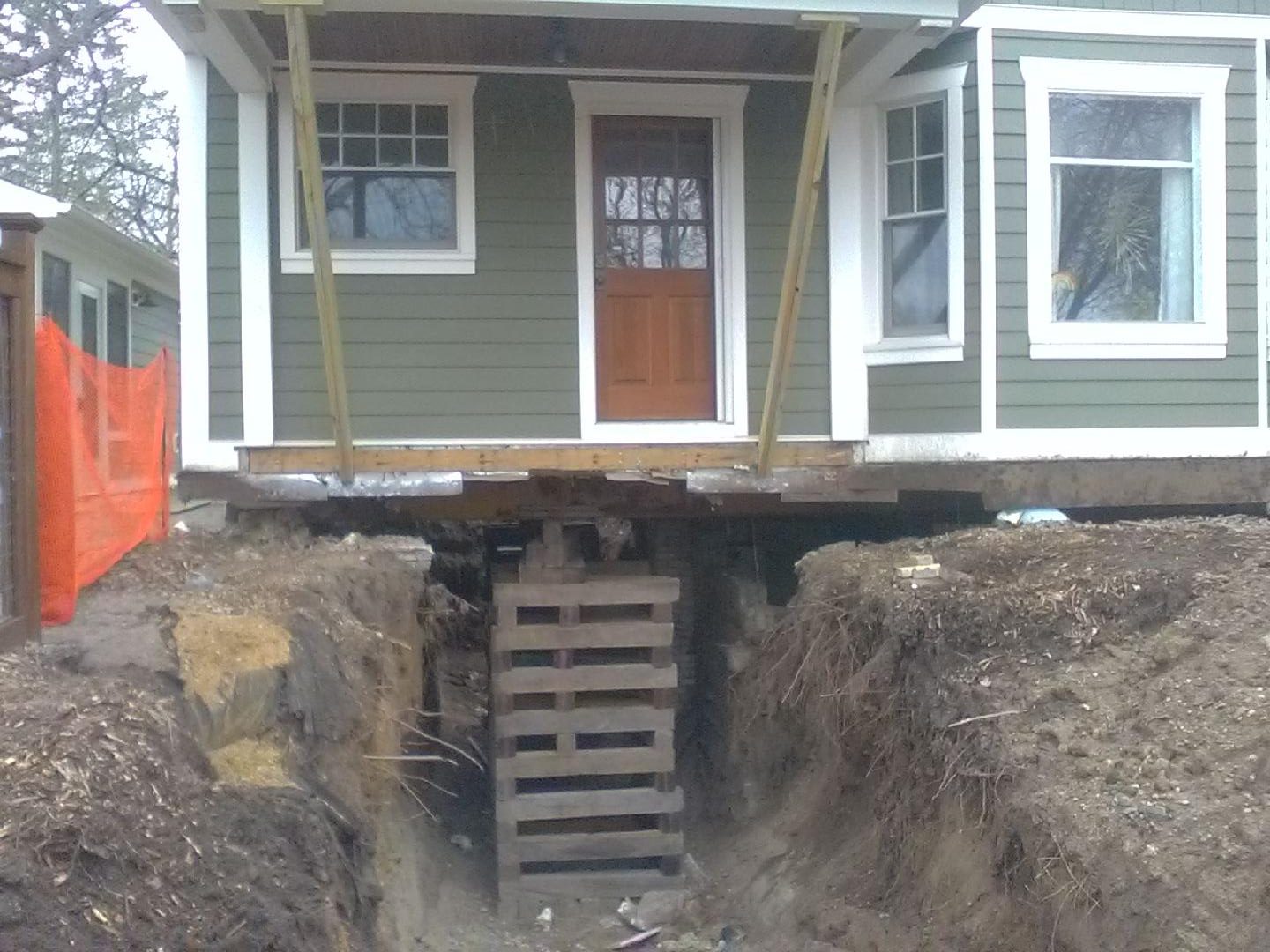Whatever You Required to Learn About Basement Support for a Stronger Home
Cellar support is an essential process that can significantly enhance the architectural honesty of a home. Whether you are thinking about renovating your cellar or have actually noticed indicators of foundation problems, recognizing the ins and outs of foundation is essential. From recognizing the indications that your home might gain from underpinning to the prices entailed and post-underpinning maintenance, this comprehensive overview will shed light on the intricacies of this building and construction technique. Keep tuned to find just how basement base can not only reinforce your home yet also offer peace of mind for several years ahead.
Advantages of Basement Underpinning
Cellar foundation supplies substantial structural reinforcement and raised security to homes, guaranteeing lasting safety and resilience. One of the key benefits of basement base is the capability to strengthen the foundation of a home, especially in instances where the existing foundation is weakened or jeopardized. By expanding the depth or size of the foundation, underpinning disperses the weight of the structure a lot more properly, minimizing the danger of negotiation or structural failure over time.
Moreover, cellar underpinning can develop extra space or enable for the construction of a cellar in homes that do not presently have one. This can substantially enhance the value of the home and give more useful space for the house owners. Additionally, underpinning can assist prevent water infiltration and improve the general energy effectiveness of the building by securing off splits and gaps in the structure.
Indicators You Need Underpinning
Offered the architectural reinforcement and security advantages that cellar underpinning provides, it is essential to be knowledgeable about particular indicators that might signify the need for this fundamental fortifying technique. One usual sign that your home may need support is the existence of splits in the wall surfaces, specifically if they are diagonal or broader than a quarter of an inch. Furthermore, doors or windows that are sticking or no more closing effectively can show a shifting structure that needs support. Unequal or sloping floors, particularly in older homes, may additionally suggest foundational problems that foundation can deal with successfully. If you see gaps between the walls and the ceiling or between the wall surfaces and the flooring, it might be an indicator of foundation negotiation, triggering the requirement for foundation. Last but not least, any visible indications of dampness or water damage in the cellar can be an indicator of a jeopardized structure that calls for underpinning to avoid additional structural damage. Consistently inspecting your home for these signs can assist you recognize the need for underpinning early, ensuring the architectural integrity of your building.
Process of Underpinning

To start the procedure of foundation, an extensive analysis of the existing structure's problem is conducted by qualified structural engineers. This evaluation involves checking the architectural stability of the structure, identifying any kind of indicators of distress or weakness, and determining the ideal base approach to reinforce the structure. As soon as the assessment is complete and foundation is considered essential, the underpinning procedure typically begins with digging deep into sections of the existing structure in a critical fashion. This excavation enables for the installment of added support, such as concrete or steel beam of lights, below the foundation to enhance its stability and load-bearing capability.
After the support group is in place, the following action includes slowly filling up the dug deep into sections with high-strength grout to secure the brand-new structure support ready. Throughout the underpinning process, careful surveillance and modifications are made to make certain that the foundation is successfully enhanced which the architectural stability of the building is protected. By adhering to an organized method and sticking to sector ideal practices, underpinning can effectively strengthen the structure of a home and minimize architectural issues.
Price Considerations
Thinking about the economic implications of underpinning a cellar is crucial for property owners aiming to strengthen their home's structure. The cost of support can vary considerably depending upon various factors such as the dimension of the basement, the deepness of the base required, the present problem of the foundation, and the details base technique chosen. Typically, property owners can anticipate to pay anywhere from $1,000 to $3,000 per direct foot site here for underpinning services. This suggests that for a regular 30-foot cellar, the complete price can range from $30,000 to $90,000 - basement lowering toronto.
It's important for property owners to acquire multiple quotes from trusted foundation service providers to ensure they are getting a reasonable cost for the job required. In addition, it is very important to budget for any kind of unanticipated conditions or extra costs that might emerge throughout the underpinning process. While the cost of underpinning may seem high, it is a necessary investment to make sure the architectural integrity and security of the home in the future.
Upkeep After Underpinning
Following the conclusion of cellar foundation, normal maintenance is essential to preserve the architectural improvements and make certain lasting stability of the home. When support is done, house owners should vigilantly keep track of the basement for any kind of indicators of fractures, water infiltration, or shifts in the structure. Normal examinations by a certified expert can assist capture any kind of problems beforehand, protecting against possible costly repairs in the future.
It is important to maintain appropriate drain around the structure to stop water damage. Rain gutters should be kept tidy, and downspouts need to route water away from your house. Any kind of landscape design around the structure ought to slope far from the home to prevent water merging near the basement wall surfaces.

Furthermore, keeping consistent humidity degrees within the cellar is crucial to avoid moisture-related problems. Proper air flow and making use of dehumidifiers can assist manage moisture degrees and shield the recently strengthened foundation.
Verdict
In final thought, cellar support is a helpful process for enhancing the foundation of a home. By recognizing the indicators that show the need for underpinning and recognizing the process and expenses entailed, house owners can ensure the security and safety and security of their residential property - Walkout basement toronto. Proper upkeep after underpinning is necessary to prolong the lifespan of the foundation and avoid future issues
One of the vital advantages of basement support is the ability to reinforce the structure of a property, specifically in situations where the existing foundation is damaged or endangered. When the analysis is full check out this site and foundation is Home Page deemed necessary, the underpinning process typically begins with digging deep into areas of the existing structure in a calculated way. The cost of underpinning can differ dramatically depending on numerous variables such as the dimension of the basement, the deepness of the underpinning needed, the present condition of the foundation, and the particular support approach picked. When foundation is done, home owners ought to faithfully monitor the basement for any indicators of splits, water seepage, or shifts in the foundation.In conclusion, basement foundation is a useful process for reinforcing the structure of a home.